
Dahlia Tuber
Harvest & Storage
Workshop
Harvest more tubers per plant.
Lose fewer tubers in storage.
Plant more dahlias next year!
The key to next summer's abundant blooms is a skillful harvest this fall and successful storage this winter.
Want to make dividing fun instead of frustrating, and avoid expensive storage loss?
Work with us to gain the skills and knowledge you need to become a master divider and safely shepherd your tubers through the winter.
Your dahlia garden will grow exponentially every year afterward.
Harvest and Storage Workshop
Friday October 24th or Saturday October 25th, 2025
On-site at Sunset View Farm
27 Pierce Road, Lafayette NJ 07848
1 ticket includes:
-
Full day hands-on training by owners of SVFD
-
Max class size 12 participants
-
20 premium single-division tubers ($250 value)
-
FREE lifetime access to digital companion course ($150 value)
Schedule
9:30-10:00 - Classroom overview
10:00-10:45 - Garden cleanup and lifting
10:45-11:30 - Washing
11:30-1:00 - Dividing part 1
1:00-2:00 - Lunch + Q&A with the farmers
2:00-3:00 - Dividing part 2
3:00-3:15 - Rinsing, drying & labeling
3:15-5:00 - Storage principles & practice
5:00-5:30 - Determined by group interests

Turn a chore into a treasure hunt
Beginner and experienced dahlia lovers alike often see the tuber harvest as a necessary evil to endure in order to get all those fabulous blooms next year.
Without guidance, the harvest process can become a messy, disorganized, frustrating slog.
And after months of anticipation, it often ends in heart-breaking failure: storage loss! Hundreds or thousands of dollars of tubers and countless hours of effort can end up as rotten mush in a box come spring.
We've been there, done that, and we can help you avoid it.
Once you finally learn how to wind up with more healthy tubers than you can possibly plant in the spring, the harvest can be a blast.
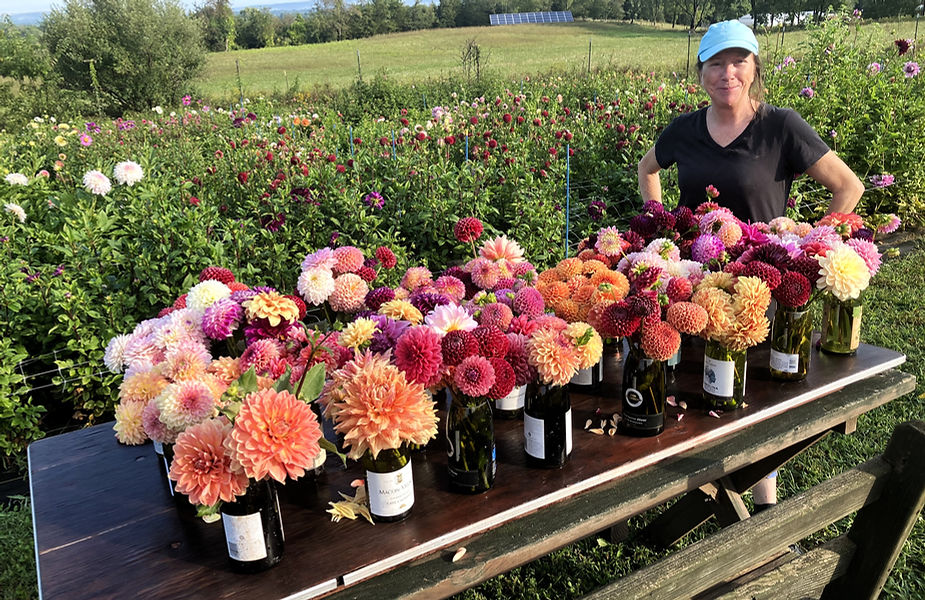
Grow your biggest cutting garden ever next summer!
Dahlias multiply exponentially each season, with each individual tuber growing into a clump of anywhere from two to twenty viable tubers each season.
It's seriously fun; like digging for gold!
But if you aren't good at processing and storing all that gold, you'll miss out on most of that return. Sometimes, even all of it.
Total storage failure is a common tragedy for new growers, who then have to spend lots of money re-buying tubers. We don't want that to happen to you!
Join us for the harvest and we'll teach you how to get and keep the most possible tubers out of every single clump, so you can plant your biggest garden ever this coming year.
Key takeaways from this workshop:
-
Learn how to avoid common unnecessary damage in the cleanup, digging and washing processes
-
Become an expert eye-spotter and tuber divider, so you get the most initial multiplication out of your clumps
-
Learn why storage failure happens so often and how to make storage work for you, in your specific home environment

Take home 10 years of experience.
Ten years ago, we started as home gardeners with just twenty plants. We now care for 10,000 dahlias a year on our farm and serve thousands of customers each season.
We've learned a thing or two along the way!
We'll not only share the right way to do things; we'll also let you in on some of our biggest failures so you can benefit from our mistakes.
Whether you grow a dozen plants or hundreds, this full-day workshop is designed to turn beginners into confident gardeners, or even to transition gardeners into farmers -- with no fear of the frost.

Testimonials from past teaching events
Jamie C, 2024
~
"Thank you SO much for this garden changing opportunity!!
I legit cannot tell you how excited I am, how much I learned working on your farm, and how much joy it’s already brought me. I really appreciate all your time, kindness, and knowledge sharing!"
Harvest Work Trade, sent via email, shared with permission
Jennifer T, 2024
~
"Thank you so much . . . It was so much fun being around your family and learning so much."
Harvest Work Trade, sent via email, shared with permission
Jennifer B, 2024
~
"My sister and I so enjoyed our time at the farm and will be back definitely!
Thank you so much."
Harvest Work Trade, sent via email, shared with permission

Hands-on experience.
Personal instruction.
This is not a tour where you follow us around while we "show off" how great our farm is. Don't worry - you'll get to see the whole dahlia operation, both outdoors and inside, but as an active participant in our actual harvest process.
Come prepared to get your hands dirty!
Alongside a small group of peers, you'll work through every part of the harvest process with a professional dahlia farmer (that's us) to learn our hard-won secrets of digging, washing, dividing, and successfully storing your dahlia stock over the winter -- and keeping everything organized in the meantime.
We'll teach you how to avoid the most common mistakes people make that ruin tubers at each step, with an emphasis on the trickiest parts of the process (dividing and storage).

BONUS: Take home 20 premium tubers ($250 value)
But if that doesn't sound good enough, consider that you'll also take home $250 of dahlia tubers - that's most of the cost of the workshop!
We want to make sure everyone leaves with enough stock on hand to practice successful storage, so we'll send you home with 20 tubers in our selection of some of the sturdiest and most prolific classic varieties.
You can use these to test out the storage techniques you just learned and jumpstart your garden in the spring.
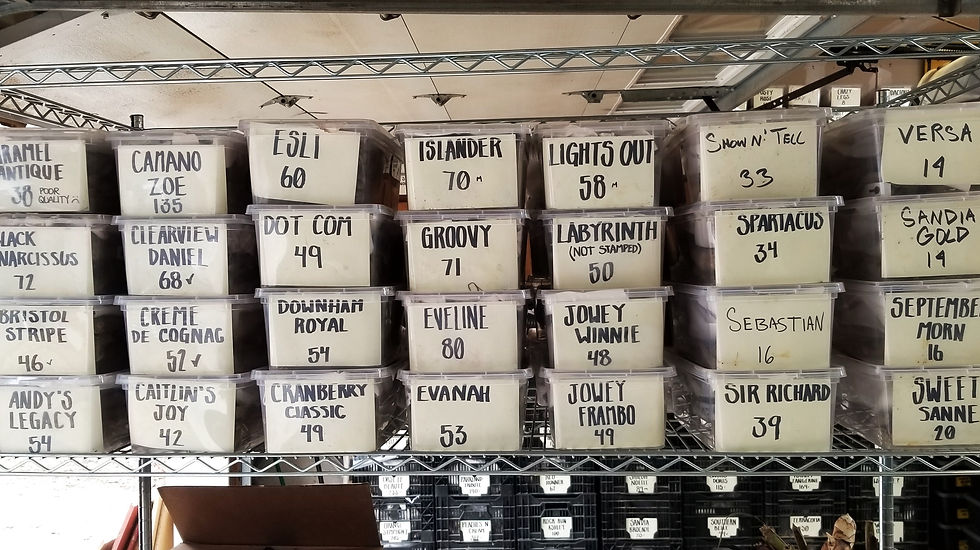
BONUS: Stay organized to avoid mislabels and disease.
With so many varieties to collect, harvesting even a small dahlia garden can get overwhelming without keeping the process organized.
We'll show you how to avoid losing labels at every step of the process, which means fewer "mystery tubers" and a more organized garden next summer. When we get to storage, we'll demonstrate you how to maximize the space you have to make winter and spring storage checks frustration-free.
Harvest is one of the times when the plants are most at risk of spreading or contracting common dahlia diseases, so we'll teach you how to minimize the risk of contaminating your stock, how to spot signs of disease at each point in the process, and what to do if you find evidence that a tuber is "unwell."
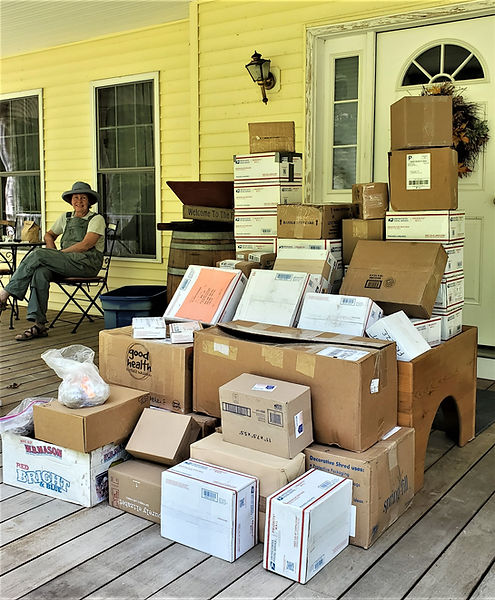
BONUS: Learn how to get FREE dahlia tubers with swaps
We haven't bought tubers in years, but every season we add dozens of new varieties to our collection at almost no cost to us. How? Dahlia swaps!
Once you master dividing and storage, you'll quickly find yourself with more tubers of each variety than you know what to do with. If you use those tubers to trade with other growers, you can get new varieties for no more than your time and the cost of postage.
We'll teach you how to find other gardeners to swap with by mail; how to save lots of money on shipping; even how to approach reputable farms (like us) to trade for top notch tubers from hard-to-get varieties.
Once you master swaps, you'll never need to spend money on tubers again.
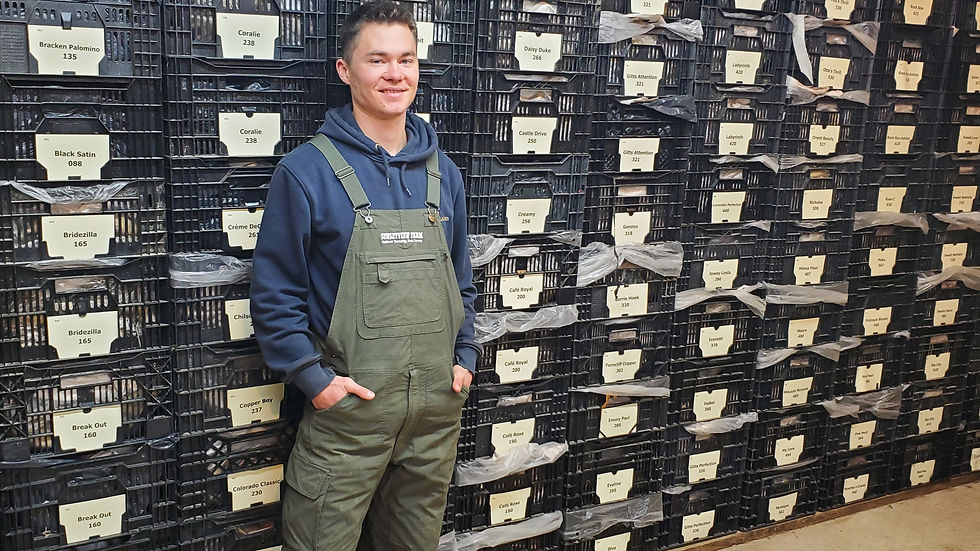
BONUS: Deep dive online companion course
Your time on-site at the farm will focus primarily on learning while doing, because there's no substitute for getting your hands in the dirt and on the plants.
But your workshop fee also includes access to a digital companion course that gives a deep dive into all aspects of the harvest process, informed by 10 years of experience growing and storing dahlias at every scale, from gardener to hobby farmer to agricultural producer.
We recommend you watch that at your leisure before you arrive. It contains invaluable information that can save you many hours of effort and hundreds if not thousands of dollars in avoided storage loss.
The companion course will open October 3rd. We'll send you registered workshop attendees instructions to access the course via email on the opening date.
Workshop Schedule
Friday October 24th or Saturday October 25th
9:30-10:00 - Greeting & classroom overview
10:00-10:45 - Garden cleanup and lifting
10:45-11:30 - Washing
11:30-1:00 - Dividing part 1
1:00-2:00 - Lunch + Q&A with the farmers
2:00-3:00 - Dividing part 2
3:00-3:15 - Rinsing, drying & labeling
3:15-5:00 - Storage principles and examples
5:00-5:30 - Determined by group interests
Garden clean-up
We'll teach you what do and how long to wait after the first killing frost hits, the best way to cut down your plants and prep for digging without losing your labels, and even how to "stop" dahlias early to make dividing easier.
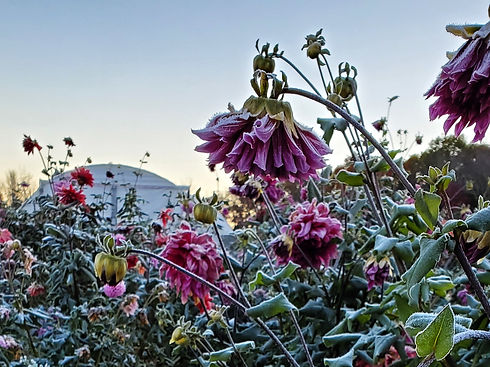
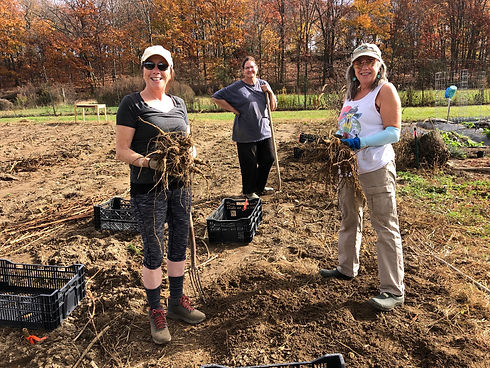
Dig
To maximize your tuber harvest, you have to avoid damaging tubers while digging (also called lifting).
We'll show you where to place your tools to avoid spearing the body of tubers or breaking the necks of the tubers, and how to effectively store clumps in containers until you're ready to wash and divide.
Wash
It's common for home gardeners to damage the necks and skins of their tubers while washing, leading to useless tubers or storage loss that winter.
We'll teach you how to set up an efficient washing station; how to handle tubers while washing and the best way to effectively clean them so you can see the eyes later when dividing.
We'll also show you the gear we use to stay toasty warm during this otherwise chilly process!
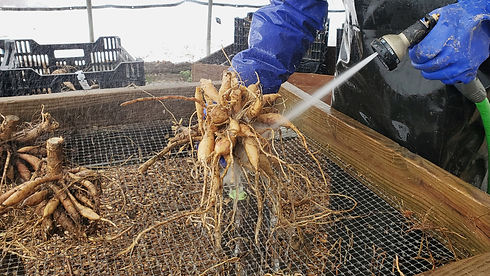

Divide
We'll spend the most time on dividing and storage. You can learn the principles of dividing online, but you'll become a master much more quickly under our instruction and real-time correction, with your hands on lots more plants than most beginner gardeners have access to.
We'll teach you how to spot even dormant eyes and how to reduce even the toughest and gnarliest clumps to beautiful single-division tubers.
All practice clumps are provided. You'll get to learn and make mistakes on our stock, so you can go home to process your own garden with confidence.
Rinse, dry, label
Rinsing and drying tubers after dividing is an important and often overlooked step. If done wrong it can lead to frost damage, shrivel or rot during storage.
We'll also go over several methods of labeling your stock, from the professional stamps we use to simple, effective methods for home gardeners. Labeling is one part of the overall method of organization that we'll teach you throughout the workshop.
Organization at every stage quickly becomes very important as you acquire more varieties in your collection!


Storage
Using our own storage set up as a guide, we'll teach you the principles that guarantee successful storage in any environment.
We'll show examples of the most common containers, mediums, and locations home gardeners use and walk you through why each method might, and might not, work for you.
You'll leave with the confidence to try several different storage methods this winter, using your own stock or the tubers we're sending you home with!